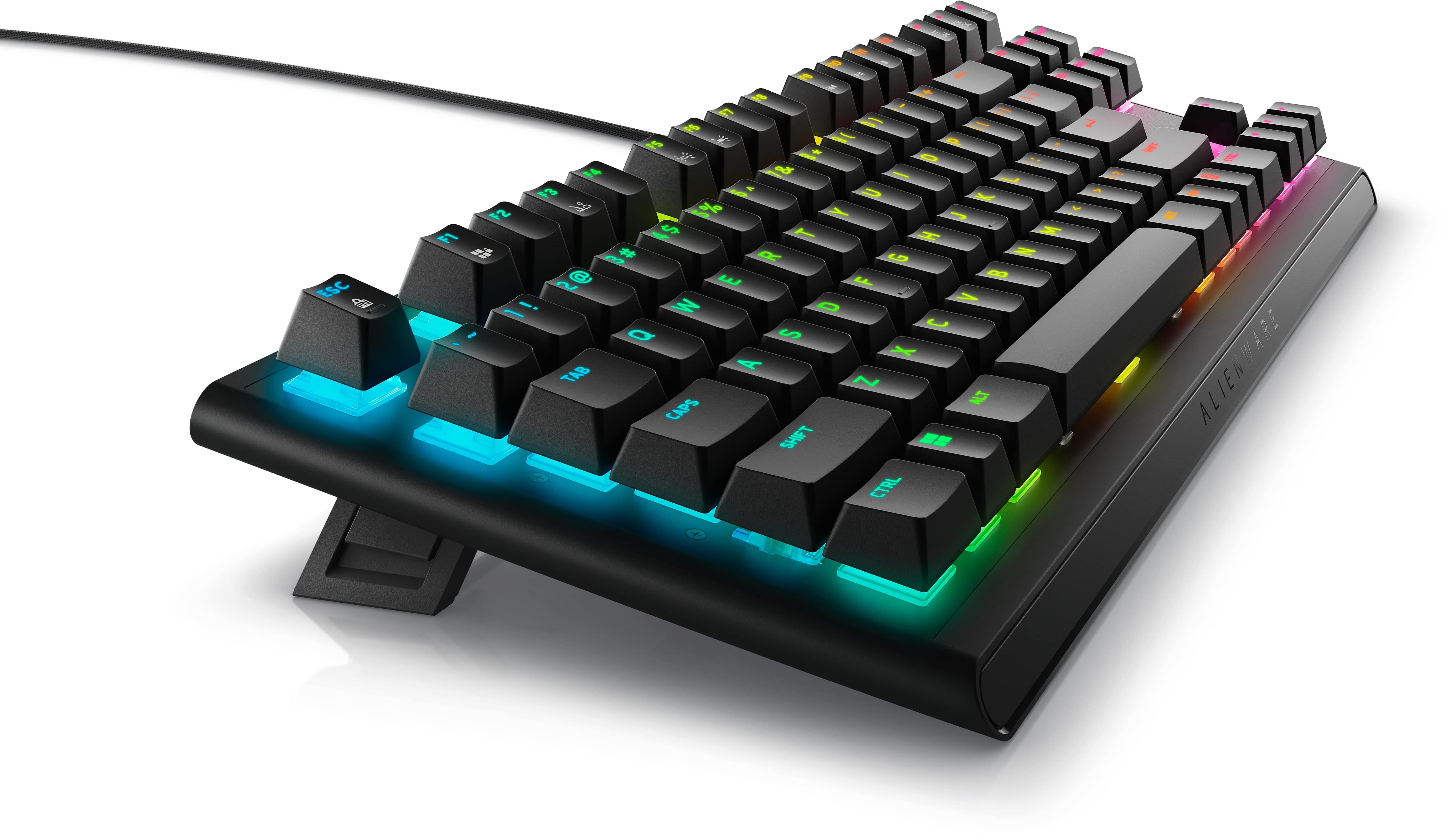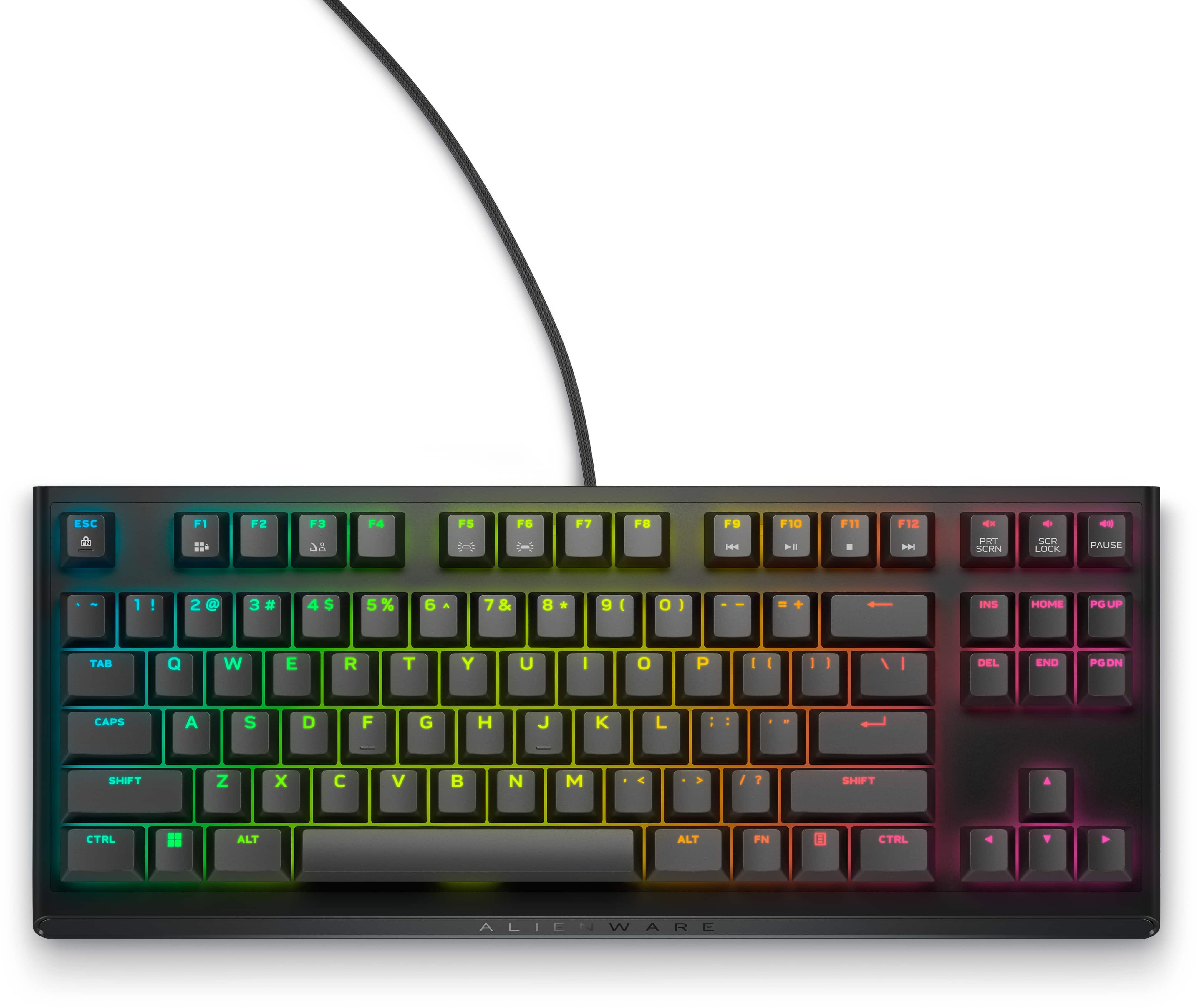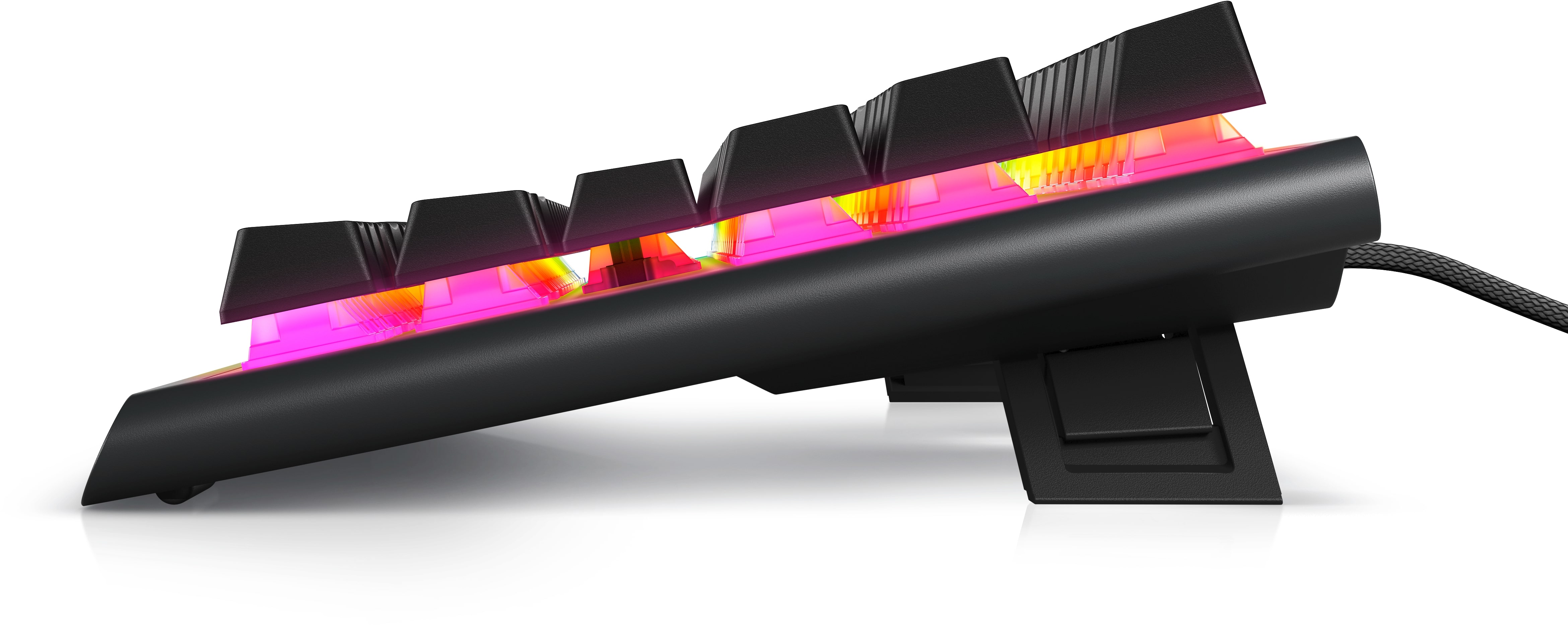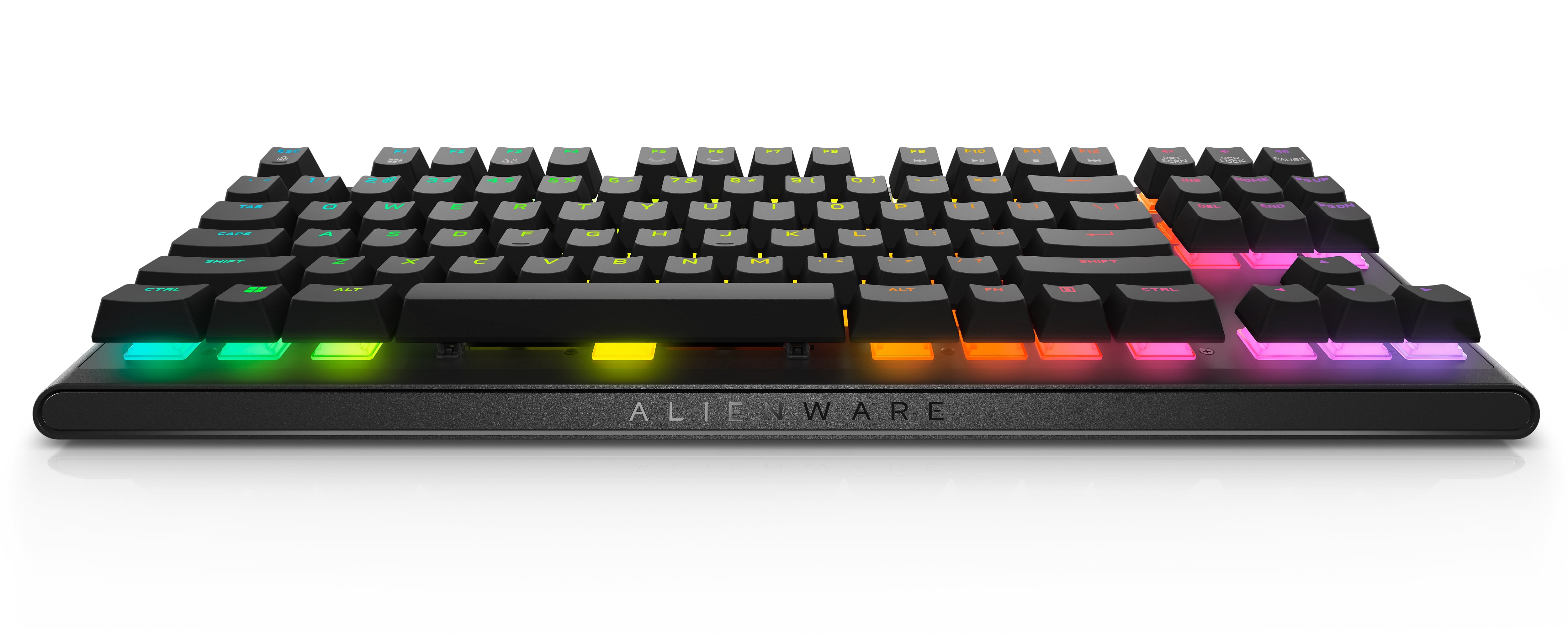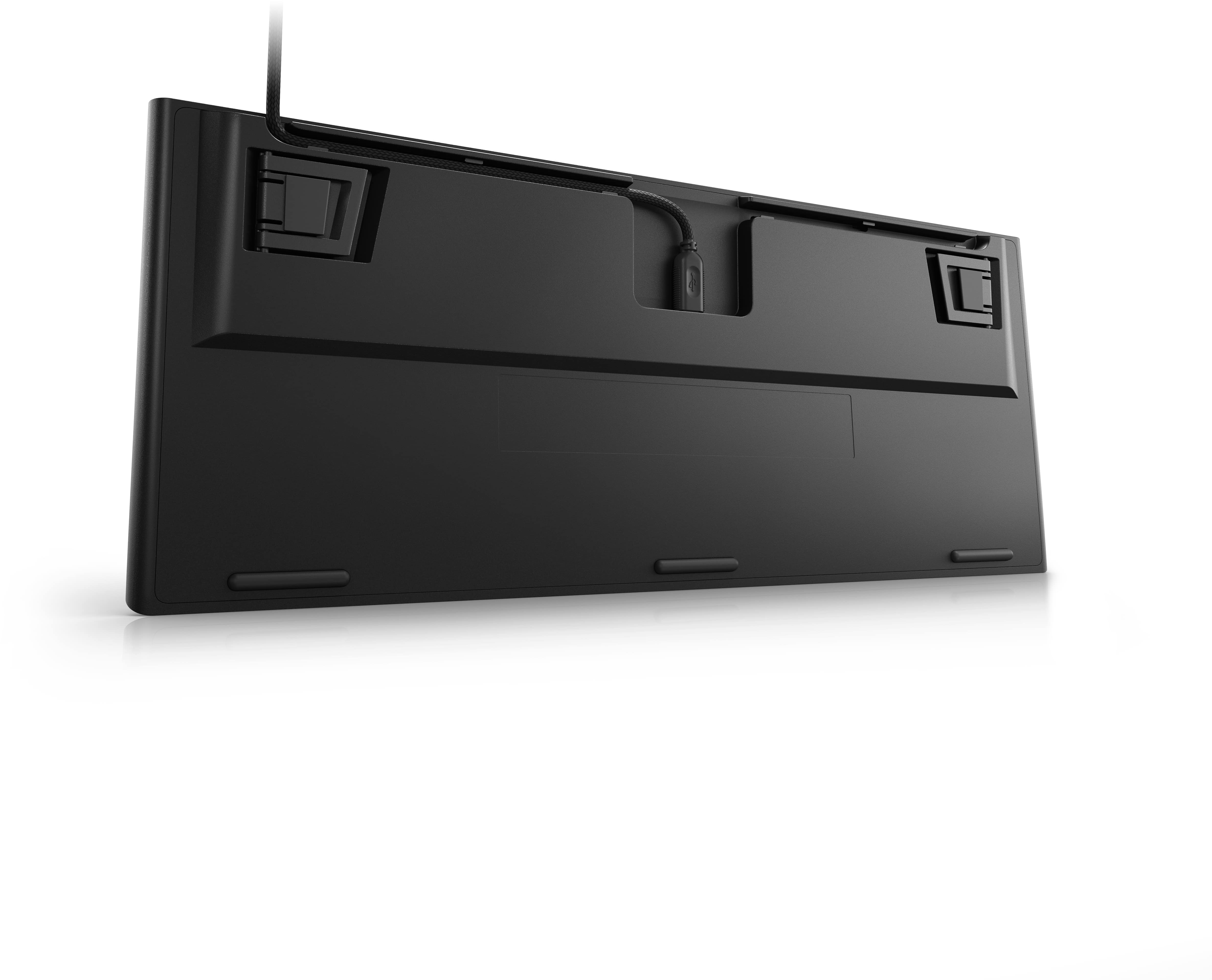Alienware is unveiling a bevy of gaming-centered devices that are sure to please quite a few PC gamers out there. The Aurora R15 is a powerful gaming desktop that includes Nvidia’s new 40-series GPUs and 13th-gen Intel Raptor Lake chips, while the AW420K is a tenkeyless (TKL) gaming keyboard for those who prize desk space.
Let’s start with the updated Aurora R15, a fully updated desktop for those who prefer a prebuilt gaming machine. Dell says the Aurora R15 has a new thermal strategy by means of new technology and a redesigned motherboard. In fact, Dell claims it has 19% increased airflow while remaining 66% quieter in CPU-intensive tasks and 9% quieter in GPU-intensive tasks.
The redesigned Z790 motherboard puts the power connectors toward the edges to avoid restricting airflow. It also removes the need for a daughterboard like Alienware’s previous designs. Dell also repositioned the PCIe x16 connector to allow for beefier triple-slot graphics cards.
The overall design of the chassis continues Dell’s funky theme with hexagonal side vents to promote airflow and increased performance. Continuing Dell’s aim at lower temperatures, there are numerous options for either air-cooled or water-cooled CPU coolers. You can also get a clear side panel if you desire.
Inside, there are a plethora of choices with one interesting omission. On the CPU side, you can equip the Aurora R15 from a 13th-gen Intel Core i5-13600K up to a Core i9-13900KF. However, there aren’t any AMD Ryzen options for those who prefer Team Red. However, on the GPU side, you can choose from an Nvidia RTX 3050 8GB up to an RTX 4090. If you’re an AMD fan, you’re in luck, as you can also choose from a Radeon RX 6500XT up to an RX 6900XT.
As far as other specs, RAM can be had up to 64GB of dual-channel memory (all configurations are DDR5). Storage is either single storage up to 4TB of NVMe M.2 SSD or dual-drive (non-RAID) storage configuration of 4TB NVMe M.2, plus a 2TB 7200RPM spinning drive.
Wireless includes all the modern specs you’d expect including up to Wi-Fi 6E, Bluetooth 5.2, and 2.
The 44L case includes cable management behind the right-side door as another way to prevent obstruction of airflow.
Alienware hasn’t announced pricing for the Aurora R15 just yet, but says it will be annpounced closer to when the desktop launches later this fall.
Next up is the keyboard, the AW420K. The TKL (tenkeyless) mechanical wired keyboard features Cherry MX Red switches, anti-ghosting, and N-key rollover. The keycaps themselves are double-shot PBT that should hold up pretty well over time. There’s a three-stage height adjustment.
Though not a wireless keyboard, the AW420K does feature a detachable USB-C cable for storage and also comes with built-in cable routing underneath the keyboard itself for those who want an even cleaner setup. This is a gaming keyboard so, of course, it comes with AlienFX RGB lighting with 16.8 million colors and a polling rate of 1000Hz.
The Alienware TKL Gaming Keyboard (AW420K) comes to North America later this fall and will cost $130.











